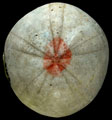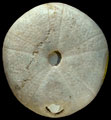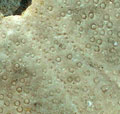The Echinoid Directory
Pyrina Desmoulins, 1835, p. 192
| Diagnostic Features |
|
|---|---|
| Distribution | Cretaceous (Middle Albian - basal Turonian), Europe. |
| Name gender | feminine |
| Type |
|
| Species Included |
|
| Classification and/or Status |
|
| Remarks |
|




